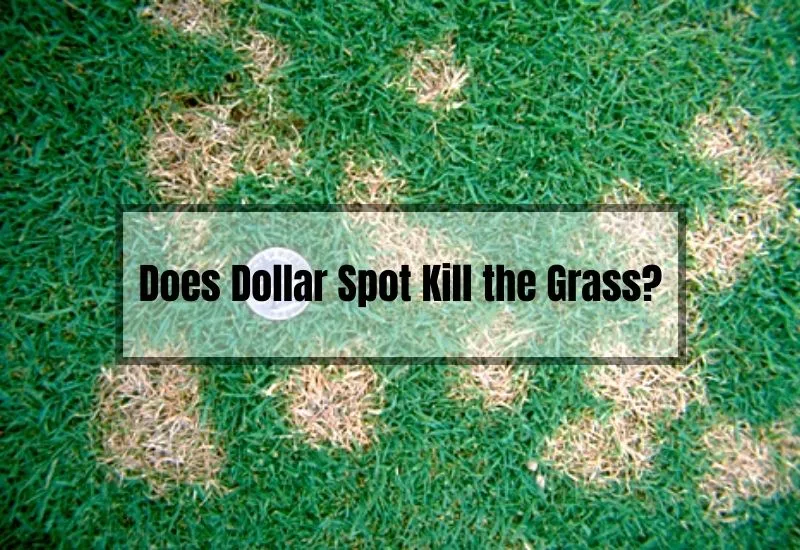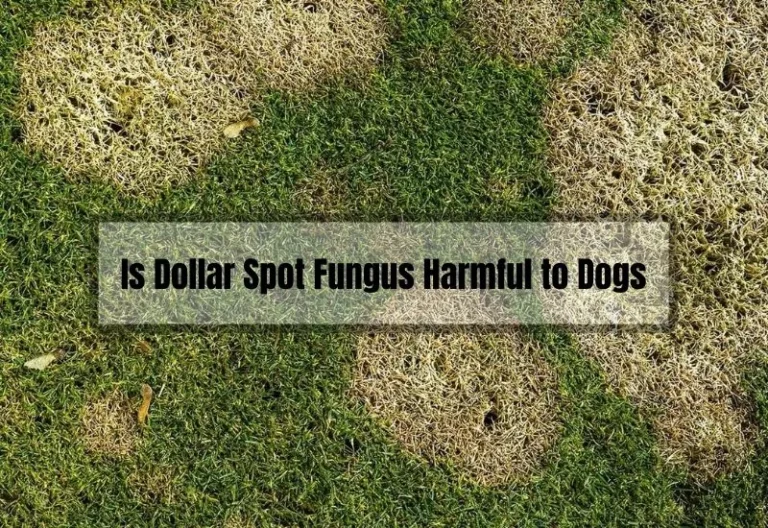Does Dollar Spot Kill the Grass? Exploring the Impact of Dollar Spot on Your Grass
From Louise: Passionate about gardening, I specialize in plant care and flower knowledge. I’m here to share my expertise and assist with your gardening queries. Feel free to ask any questions or seek advice on lawn care—I’ll respond within 24 hours!
If you’re a lawn enthusiast, you know how frustrating it can be when your lawn doesn’t look its best. One common issue that can impact the health and appearance of your turf is a lawn disease called dollar spot.
In this post, we’ll discuss the basics of dollar spot, including which grass types are most susceptible to it, the causes and conditions that encourage it, and how to effectively treat and prevent it.
By the end of this article, you’ll have a solid understanding of dollar spot and be equipped with the knowledge you need to keep your lawn looking fantastic all year round. So, let’s get started!
Key Takeaways
- Dollar spot is a common lawn disease that can impact the health and appearance of your turf.
- Fescues, ryegrasses, bentgrasses, bluegrasses, bermudagrasses, and zoysiagrasses are the grass types most susceptible to dollar spot.
- Proper identification, treatment, and prevention are key to keeping your lawn looking fantastic all year round.

Does Dollar Spot Kill the Grass?
Dollar spot is a fungal disease that can cause large areas of dead grass if left untreated. To identify dollar spot, look for hourglass-shaped lesions on the grass blades with bleached centers and reddish-brown to purplish borders. Also, check for a cobweb-like coating called mycelium.
If you notice these signs, it’s time to take action. To prevent dollar spot, avoid mowing too closely and maintain proper irrigation.
If you suspect an outbreak, apply a fungicide and remove any infected grass. With the right steps, you can save your lawn from this fungal fiend.
Related Posts:
Grass Types Susceptible to Dollar Spot
All species of turfgrass, both warm-season and cool-season grasses, are susceptible to dollar spot.
Certain cultivars of creeping bentgrass, perennial ryegrass, and Kentucky bluegrass are very susceptible to dollar spot, while others are fairly tolerant.
It’s important to keep an eye out for the telltale signs of dollar spot and act quickly if you notice any issues, whether you’re rocking zoysiagrass or Kentucky bluegrass.
Causes and Conditions that Encourage Dollar Spot
Understanding the conditions that favor dollar spot is key to preventing and managing this disease. Various environmental factors contribute to dollar spot growth, and poor lawn management can exacerbate the problem. Here’s a rundown of some factors that encourage dollar spot:
- Low nitrogen levels
- Low mowing heights
- Dry soils
- Temperatures between 60 and 90 degrees
- Warm days, cool nights, and heavy dew
- High humidity and long periods of leaf wetness
- Excessive thatch and wet autumn leaves on the lawn
Related Posts:
How Does Dollar Spot Spread?
Dollar spot can spread in various ways, including via lawnmowers, equipment, shoes, wind, water, and animals.
It’s essential to remain vigilant and take necessary steps to prevent the spread of the fungus.
Keep your lawn well-maintained, avoid over-fertilization, and ensure proper watering. Additionally, be cautious when mowing the lawn and avoid mowing when the grass is wet.
Treating Dollar Spot Effectively
To effectively treat dollar spot, you need to do more than just use fungicides. While they can help, they shouldn’t be your only line of defense. Consider applying a compost top dressing over the lawn to increase soil microbe populations, which can help fight off the fungus.
Using adequate nitrogen fertilizer is also important since low nitrogen levels are a breeding ground for dollar spot.
Removing thatch with a verticutter or power rake can also help. Finally, correct your irrigation regime by watering deeply and less often, preferably in the early morning.
Related Posts:
Preventing Dollar Spot in your Lawn
To prevent dollar spot from affecting your lawn, it is important to maintain a healthy lawn with proper care. Here are some tips to help you promote a healthy, robust lawn and keep dollar spot at bay:
- Mow your grass at the proper height for its species. Taller grass can help prevent fungal diseases.
- Keep your mower blades sharp to reduce stress on the grass.
- Water your lawn deeply and less frequently to encourage deep root growth. Irrigate in the early morning to minimize the time grass blades are wet.
- Aerate your lawn to improve soil structure and reduce compaction. Overseed your lawn to increase grass density, making it harder for diseases to establish.
- Test your soil and amend it with the necessary nutrients, especially nitrogen. Apply organic matter, like compost, to improve soil fertility and microbial activity.
- Remove fallen leaves and debris from your lawn to prevent wet, disease-prone conditions. Control thatch buildup through regular dethatching or vertical mowing.
- Use disease-resistant grass species or cultivars when possible. Avoid over-fertilizing with nitrogen, as this can encourage rapid growth and susceptibility to disease.
- Practice proper sanitation by cleaning lawn tools, especially after working in a diseased area. Monitor your lawn regularly for signs of disease and take action promptly if you spot any problems.
- Seek professional advice for lawn care practices tailored to your specific climate and region.
By following these tips, you can create an environment that is less susceptible to dollar spot and other fungal diseases. Remember to monitor your lawn regularly for signs of disease and take action promptly if you spot any problems.
Frequently Asked Questions (FAQs)
How can I be sure it’s dollar spot and not another lawn disease?
Look for the characteristic hourglass-shaped lesions and mycelium. However, it’s always a good idea to consult with a lawn care professional for accurate diagnosis and treatment recommendations.
How often should I apply fungicides to prevent dollar spot?
The frequency of fungicide applications depends on the severity of the disease and the specific fungicide used. It’s best to follow the manufacturer’s instructions and consult with a professional for guidance.
Can dollar spot be completely eradicated from my lawn?
It’s difficult to completely eliminate dollar spot, but with proper lawn care practices and treatments, you can manage the disease effectively and minimize its impact on your turf.
How long does it take for the grass to recover after treating dollar spot?
Recovery time depends on the severity of the disease and the effectiveness of your treatment plan. Generally, it can take a few weeks to several months for your lawn to bounce back.
Conclusion
In conclusion, dollar spot is a fungal disease that can cause serious damage to your lawn if left untreated. However, by following a comprehensive treatment plan and accurately identifying the issue, you can save your grass and keep your lawn looking its best.
Maintaining a healthy lawn is the best way to prevent fungal diseases like dollar spot. Be sure to keep up with lawn care treatments, such as proper mowing, watering, and fertilization, and seek help from professionals if necessary.
Remember, prevention is key when it comes to protecting your turf from dollar fungus and other lawn diseases. For more information on lawn care, check out our related posts on understanding Spectracide’s efficiency against various weeds, lawn fertilization, grass clipping disposal, and more.
Related Posts:
- Understanding the Spectracide’s Efficiency Against Various Weeds
- Unlock the Potential of Manure in Grass Growth: The Lawn Fertilization Guide
- Mastering the Art of Grass Clipping Disposal: A Step-by-Step Guide
- Solving the Grass Clippings Problem: Unveiling the Top Solutions
- Protect Your Turf: Prevent Dollar Fungus From Ruining Your Lawn






